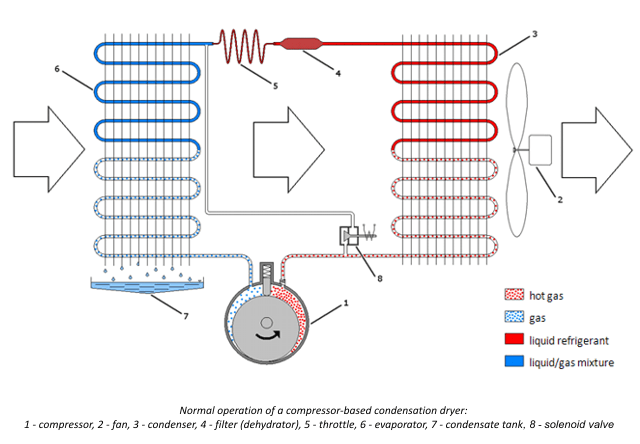How Does A Dehumidifier Work?
A dehumidifier removes moisture from the air. It works by drawing air in and removing the moisture, then returning the dry air back into the space. Dehumidifiers are ideal in helping prevent mould and in spaces where humidity and dampness are an issue.
There are two main types of dehumidifiers, desiccant and refrigerant (also known as mechanical).
Desiccant dehumidifiers perform exceptionally well when used in cooler temperatures, or when a low dew point is required. As there is no actual water produced during the process, these systems can work effectively at sub-zero temperatures.
In comparison, Refrigerant (mechanical) dehumidifiers are more economical at higher temperatures i.e., 20° C. and more energy efficient. Drawing air in, then filtering it and cooling it to condense the moisture, then reheating it and pushing the warmer, dryer air back into the room.
Is a Dehumidifier Worth It?
Dehumidifiers for Water Damage
Yes, if you have issues with moisture and/or humidity.
Generally, cheaper models have fewer features, a small tank and may not be as efficient at removing water. More robust models typically have a better water-removal capability, higher energy efficiency and more features such as a larger tank or preferably, a drain hose.
In some instances, such as water damage restoration, a commercial grade refrigerant dehumidifier will be your best option. One of the features that makes the commercial dehumidifier a superior option is that it offers a water pump and drain hose, not a water tank. This is an efficient and stress-free solution.
Most non-commercial units only offer water collection tanks. If you are using a dehumidifier after a flood event, be prepared to empty the tank frequently as it'll be pulling a lot of water from the air.
Can You Use a Portable Dehumidifier?
Yes. There are portable units that are commercial or industrial grade. A portable unit is easy to manoeuvre and store but offers very powerful water removal rates and includes commercial grade features. Take a look at our portable dehumidifier range.
Opting for a refrigerant dehumidifier with a water pump and drain hose means that you can set it for continuous drainage to empty straight into an outdoor drain.
Will a Dehumidifier Help After a Flood or Water Damage?
Yes. Refrigerant dehumidifiers are especially effective during the early stage of flood restorations or if you have persistent humidity or dampness problems.
If your home has suffered from water damage and you're trying to dry it out, a refrigerant dehumidifier unit can make a substantial difference.
If your furnishings have been soaked by floodwater, then running a dehumidifier in the room will help to dry them out faster. It won't pump water out of the house, but it will help remove water from the air, and keep the indoor humidity down.
The dehumidifier will draw deep moisture from carpets, underlays, walls, sub-floor, building structure and furnishings.
How Long Should I run the Dehumidifier?
When using a dehumidifier to dry out a significant amount of water, you will probably need to run it for several days. For this reason, choosing a commercial portable dehumidifier is the better option.
Difference Between Residential and Commercial Portable Dehumidifiers
Removes a much larger volume of water per day
Comes with a water pump and drain hose rather that a water tank
Can work more efficiently in both small and large rooms




